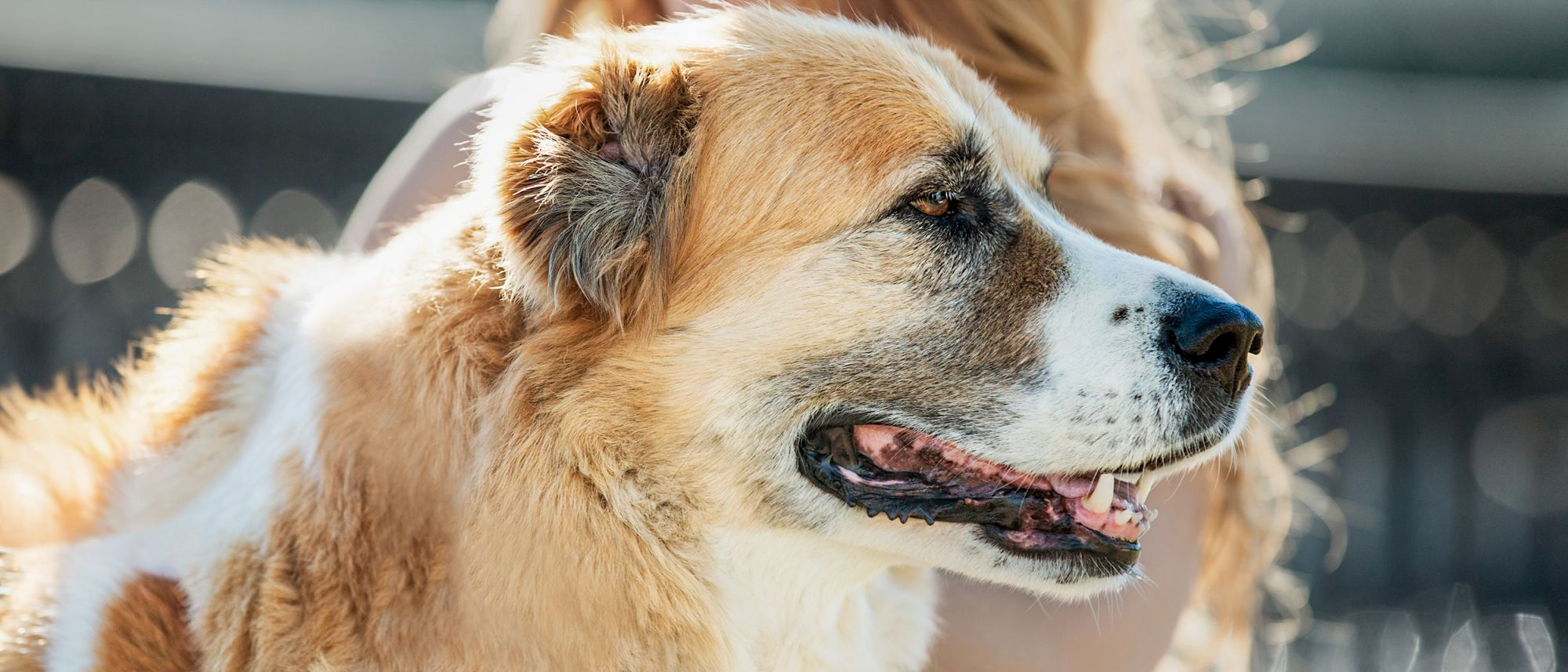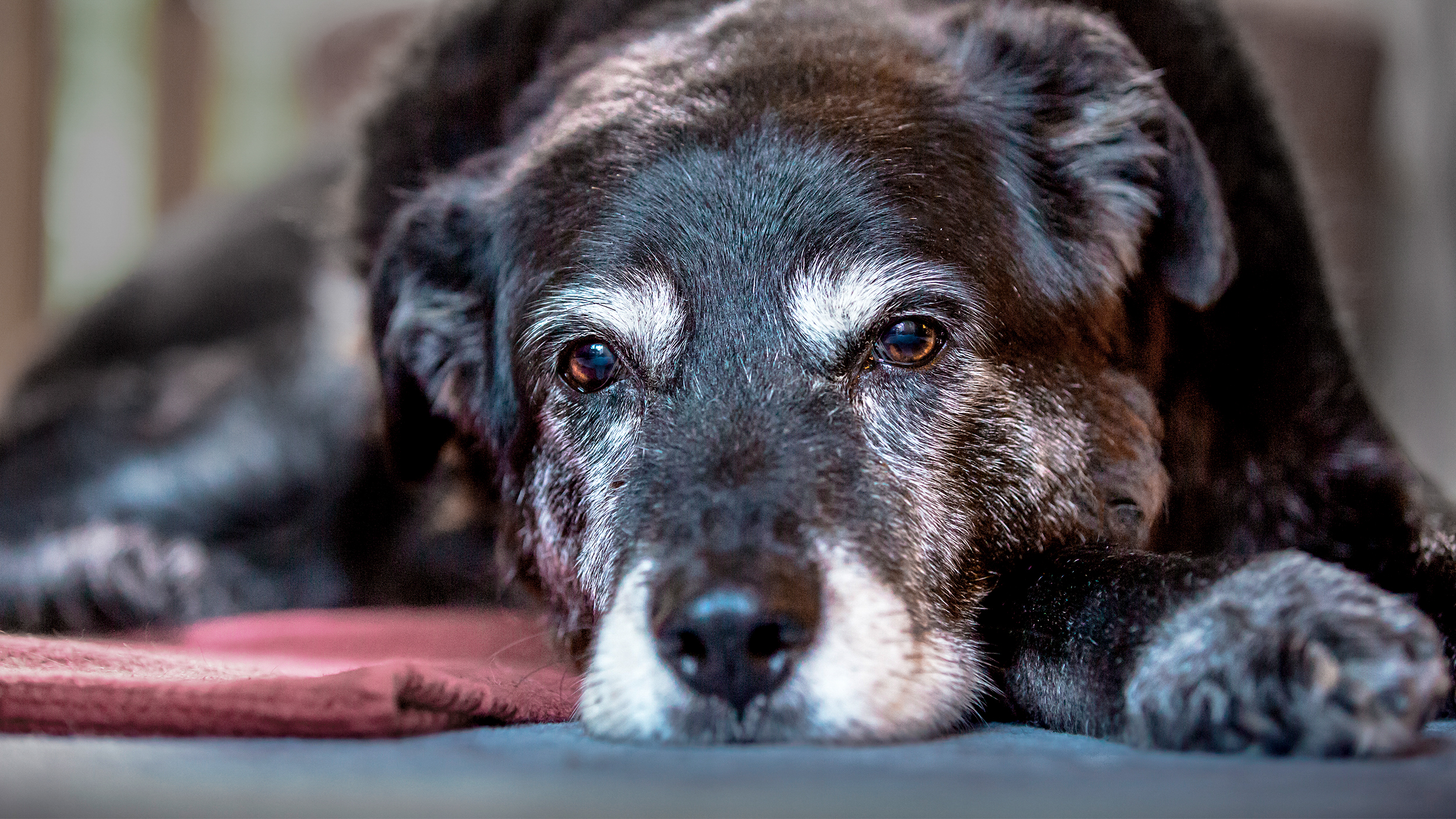Your dog's end of life care

In the last part of your dog’s life, it’s important to give it the care and comfort it needs, as well as putting its wellbeing and happiness first.
What problems might an older dog suffer?
As it gets older, your dog’s bodily functions and organs are gradually losing effectiveness. Cell growth and regeneration slows, so they’re less able to repair any damage and recover from illness.
Older dogs can struggle with their vision if they develop cataracts – a disease associated with diabetes mellitus, which can affect ageing dogs and those which are overweight. Weak thyroid gland function, known as hypothyroidism, is the most common hormonal disease among dogs, while osteoarthritis can cause your dog to lose mobility due to degenerating cartilage and joint health. Senior dogs may also have cognitive disfunction, where the blood and oxygen flow to their brain is reduced and their behaviour is affected.
How can I look after my older dog?
Regular check-ups with your vet are one of the key ways of spotting age-related diseases early on and establishing the right programme of care for your senior dog. You can also look after your dog’s health at home to slow the onset of these illnesses and related conditions by:
- Feeding it a complete, balanced food in the right quantities
- Maintaining its ideal body weight to avoid obesity-related diseases
- Regularly grooming your dog – washing, hair-brushing and dental hygiene
- Keeping up with anti-parasite treatments
- Exercising your dog regularly, although its walks may need to be shorter

What if my older dog is suffering?
Some conditions or terminal illnesses can cause your dog to suffer extreme pain or discomfort. If this is the case, your vet will advise you to consider the level of pain your pet may be experiencing through the ‘quality of life’ scale.
This scale considers seven factors to help you and your vet make a decision about how to best care for your dog, including hygiene, hunger, happiness, mobility, and whether your pet has more good days than bad.
Prioritising the quality of life of your pet means considering all your options, which may include palliative and hospice care towards the end of their life. This is where your dog is given medical treatment alongside being made comfortable; for example, they may have chemotherapy or be fitted with a feeding tube, as well as undergoing massage, physiotherapy or environmental adjustments.
If you decide that your dog’s quality of life is rapidly declining and their discomfort is too great, with advice from your vet, you may wish to consider other options.
As a companion animal, your dog will have been an important part of your life for many years. When it comes to their last years, it’s essential to put their quality of life first; speak to your vet about how you can look after your older dog, and what your options are for prioritising their wellbeing.
Like & share this page